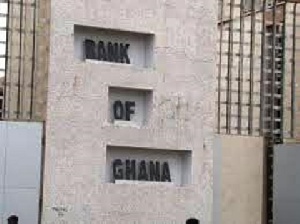- Home - News
- TWI News | TV
- Polls
- Year In Review
- News Archive
- Crime & Punishment
- Politics
- Regional
- Editorial
- Health
- Ghanaians Abroad
- Tabloid
- Africa
- Religion
- Election 2020
- Coronavirus
- News Videos | TV
- Photo Archives
- News Headlines
- Press Release
Business News of Monday, 4 April 2016
Source: Eric Kofi Kontoh
Ghana's Debt: How much you owe as a Ghanaian
Most research has shown that the effects of public debt on economic growth differs across countries; depends on country-specific factors and institutions such as the level of fiscal imbalances, the level of debt sustainability, the level of financial deepening, macroeconomic stability, and the political environment.
In response to the financial and economic crisis of 2008/09, the accumulation of public debt and its effects on economic growth have received renewed attention among many economists and policy makers.
Conventionally, a good measure of the sustainability and accumulation of a country’s debt is to consider the debt level to the overall economic output of the country measured by the Gross Domestic Product (known as the Debt-to-GDP ratio).
Data released by the Bank of Ghana recently showed that Ghana’s debt stock rose to GHC 97.2billion (or US$25.6billion) in December 2015, equivalent to 72.9% of GDP.
Out of this, total external debt amounted to GHC57.8billion (43.4% of GDP) and domestic debt was GHC39.4billion (29.5% of GDP).
Hence, based on Ghana Statistical Service population projections as at the end of 2015, every Ghanaian citizen, including children owe about GH¢3,512.81 in government debt compared to GHC872.99 as of 2011.
As government runs budget deficits, mainly leading to the rise in the debt level; servicing the debt comes with severe consequences.
Notwithstanding the methodology, assumptions, and approach, the growing bulk of research shows that increasing government debt could have a significant, long-term adverse effect on economic performance.
The contention in the economic literature is the magnitude of the impact of the debt levels on economic growth.
Therefore, the substantial increases in Ghana’s government debt pose a serious risk to the economic security of the country.
A country burdened with an enormous debt means tax increases in the near-term to finance the debt—consuming most of government revenues and crowding out investment in priority areas such as education and healthcare.
As the tax increases persist, it will become increasingly difficult for the low and middle-class Ghanaian to maintain their standard of living excluding perhaps, the politicians.
Also, such a country is susceptible to external shocks such as the global recession and most importantly, the country leaves an obligation that will pass along to the next generation.
A notable research published in the most prestigious economic journal, American Economic Review, examined data spanning over 44 countries and found that across both advanced countries and emerging markets, high Debt-to-GDP levels are notably associated with lower growth outcomes.
A recent study published by the International Monetary Fund (IMF) argued that the level of the debt is not much of a concern but rather the growth of the government debt poses long-run negative consequences on economic growth.
Similarly, the IMF study found that debt thresholds for developing countries such as Ghana, ranges from 30% to 60% and that of the advanced economies are higher ranging from 60% to 80%. Within the last 4 years, Ghana’s total debt stock rose to GHC97.2billion (72.9% of GDP) as of 2015, up from GHC24billion (42.2% of GDP) as at the end of 2011.
This means government added to the public debt an overwhelming amount of GHC73billion between 2011 and 2015 representing an average growth rate of 75% per year.
This represents a momentous proliferation of the public debt over the past 4 years. As the debt continues higher, the liability of every Ghanaian is also rising.
The graph below shows the historical debt-to-GDP ratio of some selected African countries in the Sub-Saharan region over the past 10 years.
As shown in the graph; comparing the Debt-GDP-ratio to the other selected countries in the sub-region, Ghana has had the highest Debt-to-GDP ratio over the past 3 years.
Here are reasons Ghanaians must be worried first, just like any other debt, such as acquiring a loan from the bank or a mortgage, the government pays interest on the accrued debt. In the 2016 budget statement, total interest payment was estimated at GH¢10.5 billion, equivalent to 6.6% of GDP.
The interest payment as a percentage of GDP was 2.8% as at 2009, 4.3% as at 2014 compared to 6.6% budgeted for in 2016. According to Fitch Ratings (2015), Ghana’s interest payment burden is the highest amongst its rated sub-Saharan Africans sovereigns.
Interest payments consume almost one-third of government revenues; meaning less spending elsewhere which ultimately reduces capital investment.
A lower debt level means savings on interest payments which could have been allocated to other areas of the economy, such as healthcare, transportation, and agriculture.
To put this in perspective, the amount budgeted for interest payment in the 2016 budget is higher than funds allocated to government units; comprising statutory payments into the National Health Insurance Fund, the Ghana Education Trust Fund, the District Assemblies Common Fund, Road Fund, Petroleum-Related Funds, transfer to the Ghana National Petroleum Company and retention of internally-generated funds by MDAs estimated at GHC9.7billion.
Additionally, the budgeted interest payments for 2016 is higher than the total amount of GHC6.7 billion allocated for capital expenditure in the country. It is also higher compared to the expected tax proceeds from domestic goods and services estimated at GHC7.4billion.
Total revenue and grants as a percentage of GDP were estimated at 23.3% compared to total Debt-to-GDP ratio of 72.9% as at the end of 2015.
The low revenue growth in the era of prolonged weakening economic growth is also a critical factor in the soaring of government debt.
This relatively showcases the case for unsustainability of the debt level. The reason is that government has to resort to rapid borrowing in order to increase its revenue in financing other capital expenditures.
At the end of the day, grants and donations from external bodies, including taxes paid by Ghanaians meant for critical investment in other sectors of the economy will be used to service the growing debt.
Wouldn’t it be judicious to see the government spend more on your health care rather than paying for the debt? Relatively, this gives us a picture of the displacement effect of the debt level on spending in the country.
We must be worried! Besides, the banking sector remains the major holder of the domestic debt. A high accumulation of debt causes interest rates to rise in the long term. Recently, among the many reasons for which the credit rating agency, Moody’s Investor Service, downgraded Ghana’s credit rating to B3 (a very negative outlook) is the high cost of funding in the domestic market.
The rise in interest rates or the high cost of capital saddling the private sector partly has to do with the fact that government is competing with individuals and business for loans at the commercial banks.
The resulting effect of the rise in interest rate is the reduction of investment in the private sector. This leads to lower productivity and a reduction in productive capacity; which in the long-run results in lower economic growth.
Secondly, as experienced in the tax policies introduced recently, soaring public debt means there is high tendency for government to increase taxes in the medium term to finance the debt and its interest payments.
For instance, an increase in personal income tax means a reduction in disposable income and savings for Ghanaian taxpayers. This increases the financial burden of many Ghanaians; reduces consumer spending and thus hinders economic growth in the long-term.
Higher taxes for businesses reduces productive investment in the private sector leading to a weaker output, unemployment and the overall ineffectiveness of the private sector, which is expected to be a key driver for economic growth.
Moreover, with the dollarization our economy and the fact that the larger part of the debt is held externally means; depreciation of the cedi will increase the amount of the external debt without any corresponding changes in spending or productivity.
A high debt level is also at risk to high-interest rate, low credit ratings and reduces investors’ confidence in the economy. Also, a rise in interest rate means an increase in funds to service the debt.
With this, more resources are allocated to servicing the debt distorting spending priorities of the government. Additionally, the global economy is in a state of instability, and there is an increasing danger of a downward spiral. Policy makers must take note that unpredicted global economic slowdowns can change the fiscal outlook in the country.
For example, when there is a recession, governments are compelled to run budget deficits as seen after the 2008/09 financial crisis.
If you are already operating a large budget deficit from increased government expenditure, then it means a rapid build-up in more debt. With our current Debt- to-GDP ratio hovering above 70% means we are highly vulnerable to external shocks.
During the July 2015 World Economic Outlook update, Olivier Blanchard, former chief economist at IMF, said the larger lesson from the Greek debt crisis is that”…the post-crisis world is a world of high debt. And it doesn’t take much.
It just takes a bad shock for the dynamics to go wrong. We have seen it in the case of Greece, but we see it in various places…” Lastly, although Ghana has faced economic headwinds over the past years, fiscal policy choices and precisely a lack of spending restraint coupled with weak revenue growth are responsible for the unprecedented increases in the public debt.
The sustainability risk of the debt level poses a danger to our future prosperity. As observed by David Hume, the 18th century Scottish philosopher and economist, politicians prefer debt to taxes since the cost are concealed and affects the subsequent generation.
As a result, every incumbency will prefer debt knowing that generations to come will bear the consequences—our children will pick up the bill for their financial mess. To change this direction, we will need a government who is eager to put the needs of the country ahead of their own agenda.
As policy makers appreciate the need for spending and fiscal stimulus, it is similarly important to be aware of the potential short and long-term economic repercussions from accruing debt.
The fiscal policy lesson is obvious: running a deficit to speed up growth is not a bad idea, but borrowing rapidly to finance spending comes with a serious opportunity cost. Regrettably, politicians in Ghana always get away with bad policies.
You know why: the citizenry are inclined to confirming their biases than pursuing the truth when it comes to holding politicians accountable. This is holding us back.
As recently stated by Prof. Newman Kwadwo Kusi, the Executive Director, Institute for Fiscal Studies, Ghana’s Debt-to-GDP ratio has reached a level considered to be above the sustainability threshold posing serious headwinds to the macroeconomic stability and development of the country.
I can’t agree with him more as he argued out that without a well-grounded fiscal framework toward the achievement of credible policies to restore the debt sustainability and most important macroeconomic stability, the country will very soon be on a debt meltdown like Greece.
I will end by saying “A wise man will hear, and will increase learning; and a man of understanding shall attain unto wise counsels” (Proverbs 1:5)











